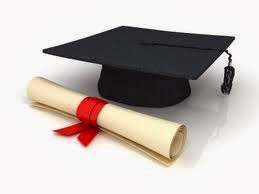B.COM (COMPUTERS)
DEGREE COURSE (I YEAR)
FUNDAMENTALS OF
INFORMATION TECHONOLOGY
Paper: 104 Max
Marks: 70T + 30P= 100
P.P.W: 5 (4 + 1) Hrs
Exam Duration: 3 Hrs
Objective: To impart
basic knowledge about computer with application of
various
packages to Business and Commerce.
Unit – I:
Introduction to computers: Definition, Characteristics and limitations of
computers - Elements of Computers - Hardware - CPU - Primary and Secondary
memory - Input and Output devices. IT enabled services - BPO, KPO, Call centers.
Modern communications (Concepts only): Communications – FAX, Voice mail,
and information services – E Mail – Creation of email id - group communication –
Tele conferencing – Video conferencing – File exchange – Bandwidth – Modem –
Network Topologies – Network types LAN, MAN, WAN and their architecture – Dial
up access.
Unit – II:
Operating System and Windows: Operating Systems: Meaning, Definition,
Functions and Types of Operating Systems - Booting process – Disk Operating
System: Internal and External Commands – Wild Card Characters – Computer
Virus, Cryptology. Windows operating system - Desktop, Start menu, Control
panel, Windows accessories .
Unit – III:
MS Office I: MS Word & Word Processing : Meaning and features of word
processing – Advantages and applications of word processing - Parts of MS Word
application window – Toolbars – Creating, Saving and closing a document –
Opening and editing a document - Moving and copying text – Text and paragraph
formatting, applying Bullets and Numbering – Find and Replace – Insertion of
Objects, Date and Time, Headers, Footers and Page Breaks – Auto Correct –
Spelling and Grammar checking – Graphics, Templates and wizards - Mail Merge :
Meaning, purpose and advantages – creating merged letters, mailing labels,
envelops and catalogs- Working with Tables – Format Painter.
MS EXCEL: Features of MS Excel – Spread sheet / worksheet, workbook, cell, cell
pointer, cell address etc., - Parts of MS Excel window – Saving, Opening and
Closing workbook – Insertion and deletion of worksheet – Entering and Editing data
in worksheet – cell range – Formatting – Auto Fill –Formulas and its advantages –
References : Relative, absolute and mixed – Functions: Meaning and Advantages of
functions, different types of functions available in Excel – Templates –Charts –
Graphs – Macros : Meaning and Advantages of macros, creation, editing and
deletion of macros – Data Sorting, Filtering, validation, Consolidation, Grouping,
Pivot Table and Pivot Chart Reports.
Unit – IV:
MS Office II: MS Access - Data, Information, Database, File, Record, Fields -
Features, advantages and limitations of MS Access – Application of MS Access –BoS in Commerce (OU) B.Com (Computers)
10
parts of MS Access window – Tables, Forms, Queries and Reports – Data validity
checks – (Theory with simple problems)
MS PowerPoint: Features, advantages and application of Ms Power point – Parts
of MS Power point window – Menus and Tool bars – Creating presentations through
Auto content wizard, Templates and manually – slide show – saving, opening and
closing a Presentation – Inserting, editing and deleting slides –Types of slides -
Slide Views- Formatting –Insertion of Objects and Charts in slides- Custom
Animation and Transition.
Multimedia: Meaning, Purpose, Usage and application – Images, Graphics, sounds
and music – Video presentation devices – Multimedia on web.
Unit- V:
Internet & E commerce: Services available on internet - WWW - ISP.
E commerce: Meaning, advantages and limitations, applications of E commerce -
trading stocks online, ordering products / journals / books etc., online, travel and
tourism services, employment placement and job market, internet banking,
auctions, online publishing, advertising-Online payment system (including
practicals).
Lab Work:
PRACTICALS:
MS DOS MS WINDOWS MS WORD MS EXCEL
MS ACCESS MS POWERPOINT INTERNET & E
COMMERCE.
Suggested
1. Introduction to Information Technology: Rajaraman, PHI
2. Fundamentals of Computers 4/E: Rajaraman, PHI
3.
Fundamentals of Computers: P.
Mohan,
4. Information Technology: Dennis P. Curtin, McGraw Hill International
5.
Fundamentals of Information
Technology: Saha etal,
6. Microsoft Office Excel 2003 step by step: Frye, PHI
7. Fundamentals of Computers: Atul Kahate, Tata McGraw Hill
8. Fundamentals of Computers: V. Srinivas, Kalyani Publications
9. Microsoft Office Word 2003 step by step: Online Training Solutions Inc PHI
10. Microsoft Office Access 2003 step by step: Online Training Solutions Inc, PHI
11.Microsoft Office Power Point 2003 step by step:Online Training Solutions Inc,PHI
12. MS Office: Sanjay Saxsena
13. MS Office: BPB Publications
14. E commerce: CSV Murthy,Himayalaya Publishing House
15. Raymond Green Law: Fundamentals of theInternet, Tata Mc Graw Hill
15.Efraim Turban: Electronic Commerce,Pearson Education
16. Fundamentals of Information Technolgy: Deepak Bharihanke, Excel
17 E-Commerce , An Indian Perspective: Joseph, PHI
18. Understanding Computers: Morley, Cengage
19. Foundations of IT: Dhiraj Sharma - Excel Books.
20. Microsoft Office Excel 2007 step by step: Frye, PHI
21. Computer Applications in Business: K. Mohan Kumar, Dr. S. Rajkumar, Tata.
22. Fundamentals of Information Technology: Dr.K.Kiran Kumar, Laysa

No comments:
Post a Comment